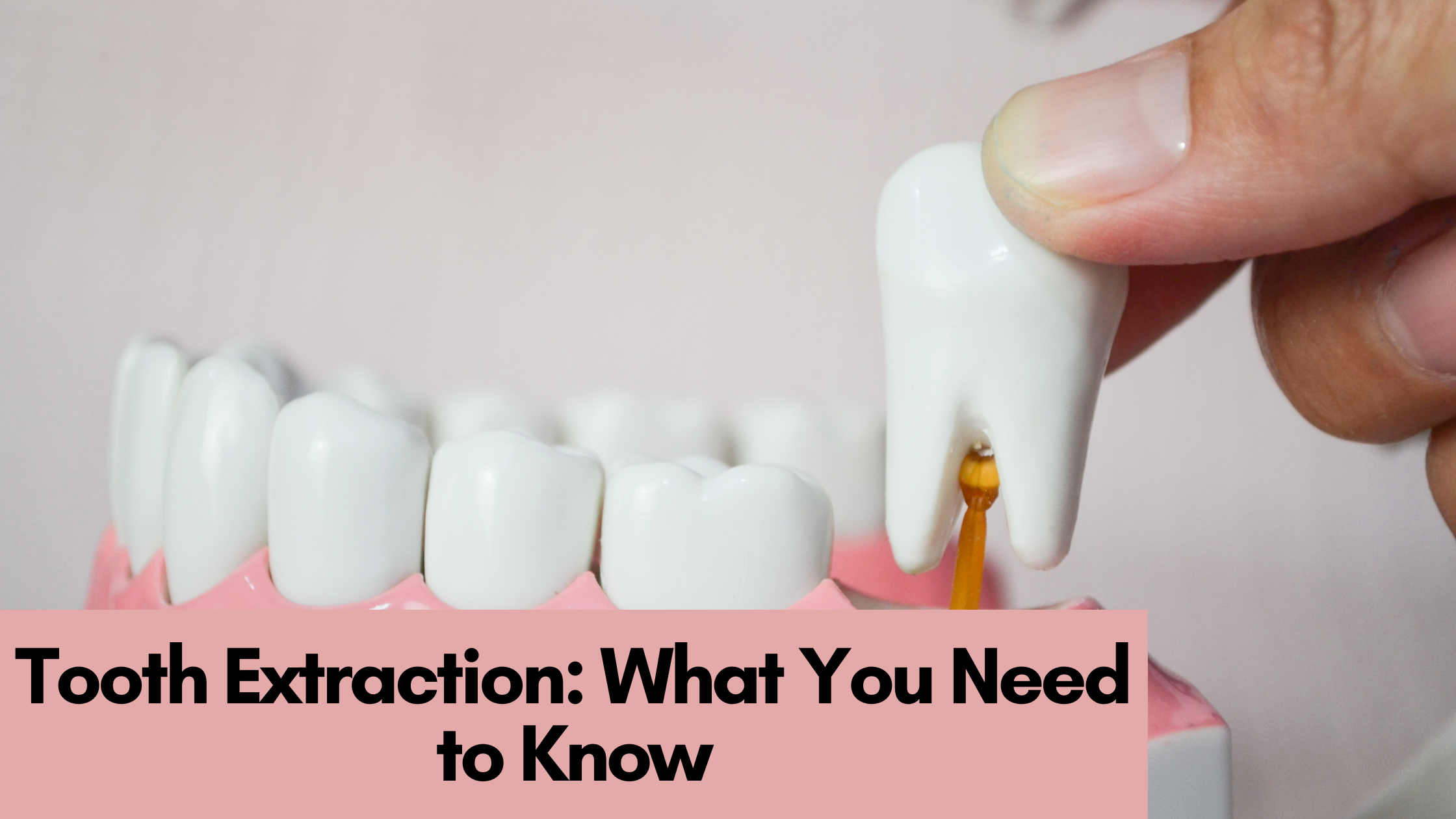 10 May 2023
10 May 2023 If you happen to need a tooth extraction any time soon, it is understood that you will be a little overwhelmed and the whole process might wreck your nerves. But extraction is a decently standard and a common practice in the domain of dentistry. This article will try to throw some light on this common procedure on the details that you might want to know before you undergo one.
Tooth extraction as the name suggests is the process of removing the tooth from its socket in the bone or uprooting it as a whole. Again, it can feel a little daunting and nerve-wracking for someone who has to undergo it, especially for the first time. Let us go through it together, and face the fear. Stay with us till the end of this article so you know how to prepare yourself for the upcoming procedure.
When Is Tooth Extraction Necessary?
In certain cases, however, complete extraction might not be absolutely necessary. You can also fix a tooth that is broken o, chipped, or damaged by decay with a filling, crown, or other appropriate dental treatment. However, if the damage is too severe to be repaired, your dental health expert might recommend opting for an extraction.
Here are some other reasons that might require a tooth extraction:
- Decay or infection has reached deep into the tooth
- Trauma or injury
- There isn’t enough room for all the teeth in your mouth
- Baby teeth don’t fall out in time for the permanent teeth to come in
- Orthodontic treatment might require tooth extraction to create room for the teeth as they move into place
- Wisdom teeth, also called third molars, are often extracted either before or after they come in
Preparation
Before uprooting the tooth, your dental health expert might require to review your medical history and dental history thoroughly and take relevant X-rays to reveal the length, shape, and position of the tooth and surrounding bone. With the information procured from these, your dental health expert will then determine the best possible way to remove the tooth or whether to refer you to an oral surgeon or a periodontist.
Before extracting your tooth during a simple uprooting procedure, they are most likely to numb the area around your tooth using a local anesthetic. However, if the process of removal is comparatively complicated, also called surgical extraction, your oral surgeon might administer intravenous (IV) anaesthesia, which can vary from conscious sedation to general anaesthesia, which is chemically formulated put you to sleep. Should that happen, you are going to have to ask someone to drive you to the doctor’s office and then back home, and also stay with you until the effects of the medicine completely wear off.
Tooth Extraction Process
There are two types of extractions you might have:
A simple extraction is the removal of the tooth that is visible in your mouth. It is fairly common for a general dental health expert to conduct simple dental extraction procedures. During this procedure, your dental health expert will usually numb the tooth and the surrounding gum tissue and loosen the teeth with an instrument, called an elevator before finally extracting it with a pair of dental forceps.
A surgical extraction is however slightly more complicated as compared to the previous one. It is usually used for a tooth that might have broken off at the gum line or has not sprouted into the mouth yet. Oral surgeons are professionally trained to perform surgical extractions. But general dentists too can perform them as well. While conducting a surgical extraction, the dental health expert or the surgeon will cut open a small incision in your gum and take the underlying tooth out.
After the Extraction
One of the crucial things to keep up with after a dental extraction procedure is done is keeping the area clean and saving it from any form of infection or bacteria build-up. Immediately following the procedure, your dentist might ask you to bite down gently on a piece of dry, sterile gauze, which you should keep in place for up to 30 to 45 minutes to stop or reduce the bleeding, while clotting takes place. While your dental health expert with also provide you with detailed aftercare instructions, you must also remember certain post-extraction tips for yourself. For 24 hours following your extraction, you shouldn’t smoke, rinse your mouth vigorously, or clean the teeth next to the extraction site.
You are bound to experience a certain amount of pain and discomfort following the extraction. In some cases, your dentist might even recommend or prescribe a painkiller for you. It might be good for you to apply some ice packs to your check to soothe and reduce the swelling. You should also not indulge in strenuous activities, avoid hot liquids or beverages and not drink through a straw. Under normal scenarios, discomfort should easily subside within a span of 3 days to two weeks’ time. However, if you happen to experience prolonged or severe pain, swelling, bleeding, fever, or any other forms of discomfort, it is your cue to immediately call or see your dental health expert or your surgeon.
Whether you’re a seasoned pro or a tooth extraction newbie, your best bet for a successful and uncomplicated procedure is to follow your dentist’s recommendations carefully before and after the procedure. A dental extraction is done to make room for something better and less painful and can keep[ your smile healthy, radiant, and confident.
